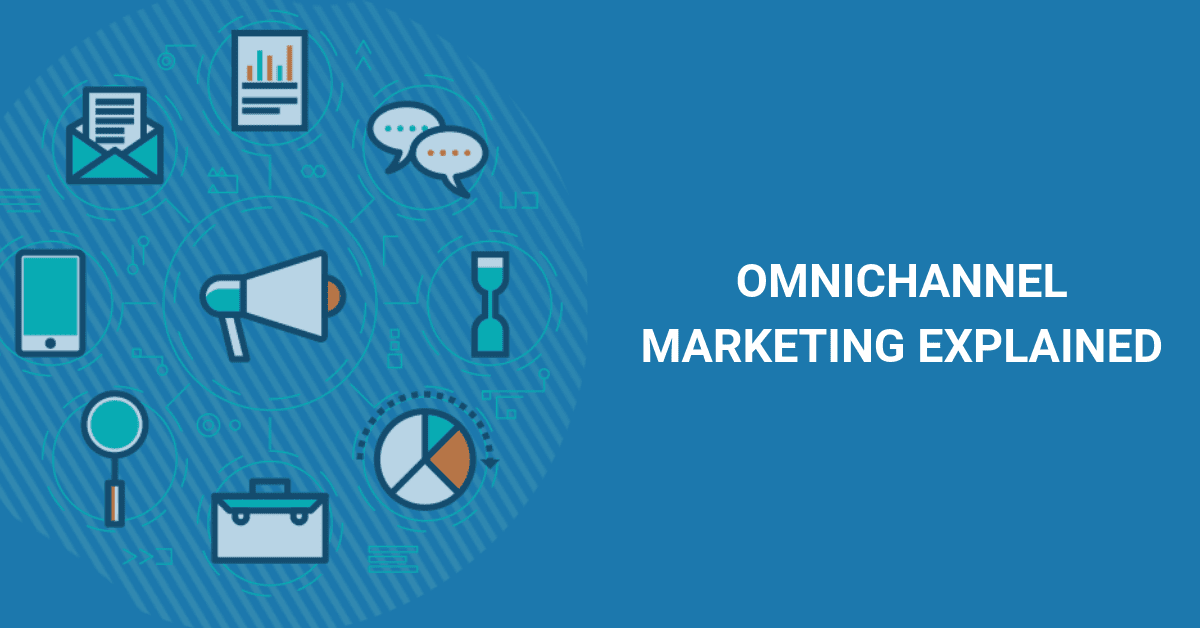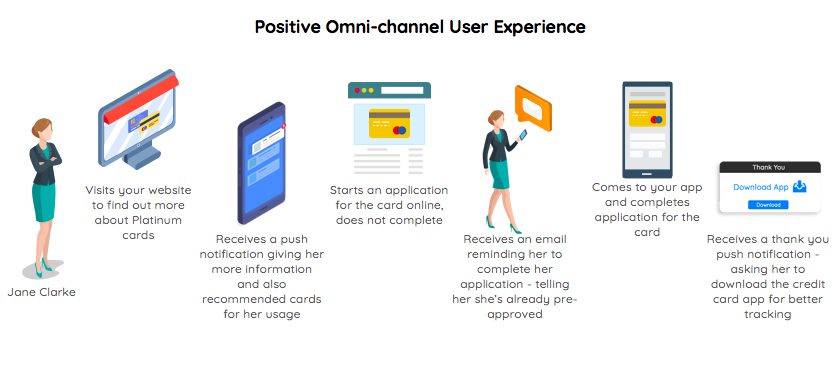What Is Omnichannel Marketing and Why You Need It Now

Reading Time: 5 minutes
It’s hard not to stay connected these days. Think about all the ways you have to reach out to a friend or coworker via their smartphone: You can send an email, a chat message, a text, a message via Facebook Messenger, a tweet…you could even try to reach them the old-fashioned way via a phone call. Now, if we have that many ways to connect with each other on a personal level, it’s no wonder we also have all those ways to reach out to consumers as marketers. We have all the same channels, plus a whole lot more: TV, radio, print advertising, banner ads, SEO, pay-per-click, events, social media, and influencers, to name only a few. On the one hand, that looks like a marketer’s dream come true, with all those ways to get in front of our potential customers and get their attention.
It can be a nightmare instead if we’re not strategic about using all those channels, to make sure they are working together, each one supporting another in moving a consumer down the path from consumer to prospect to customer to fan. And that’s where omnichannel marketing comes in.

Omnichannel Marketing Explained
If you think you’re using omnichannel marketing simply because you use more than one marketing channel, think again. With the explosion of channels over recent years, many marketers today are using email and social media and SMS and pay-per-click and print, and more. Technically they are using multichannel—not omnichannel marketing because they are using more than one channel.
The ability to create a seamless customer experience across all channels and touchpoints is provided by an omnichannel marketing platform, providing for a consistent brand message and a customized experience for the customer.
Bonus Content
|
Multichannel offers multiple touchpoints, but not the integrated and seamless experience of omnichannel and that’s the difference. With omnichannel marketing, a brand can deliver a seamless customer experience, a journey uninterrupted from beginning to end, from awareness to engagement to purchase, and then to loyalty and future purchases.
Like multichannel, omnichannel marketing also uses multiple channels.
However, the difference is in how the customer experiences that marketing.
With omnichannel, a customer should be able to move from one channel to another, say from an email to a social media page to an app on their phone—and interact with the same messaging and branding throughout, regardless of channel.
But that’s only part of it: With omnichannel marketing, a customer should be able to click on a link in an email while sitting at their laptop, put an item in a shopping cart, be able to access that same shopping cart via the app on their phone later in the day, and get a push message reminding them about the item in their cart while driving home from work and getting within a few miles of the store. That is the customer experience. And the customer experience matters…a lot.
Customer Experience Is the New Competitive Edge
Customer experience is now the key to successful marketing. In fact, customer experience will be the key competitive differentiator by the year 2020, and 60% of Millennials expect a consistent experience from brands whether they interact with that brand online, in the store, or via the phone.
So far, however, many brands are falling short in the eyes of the customers. According to Forbes.com, 89% of companies say they are competing based on customer experience, and 80% think they are doing it well, but only 8% of customers agree. It’s worth the effort! Brands with omnichannel customer engagement strategies retain 89% of their customers on average, compared to only 33% of those with weak omnichannel customer engagement.
Consumers Want Personalized Service
The customer benefits from omnichannel marketing because they get the seamless experiences they want. But your brand also benefits because you can extract data from every interaction and transaction, and much of that data is willingly handed over by consumers in order to personalize their experiences.
One survey found 48% of shoppers are willing to share data in return for personalized service—and 58% of Millennials are. These consumers are sharing their locations and personal details to improve the service a brand delivers, and to get more personalized emails with recommendations and suggestions targeted to their preferences. And that’s just what you can use that data for personalization that gets even more personalized.
The Customer Journey and Omnichannel Marketing
When you’re outlining your strategy, consider the customer journey. How the consumer moves from the awareness stage to the loyal customer stage depends on that journey. It must be a smooth and seamless one, with no interruptions or obstacles along the way.
To understand what a journey might look like, think about a typical customer journey, one of buying a car. Today most people will start that customer journey online by researching car makes and models that fit their needs and budget. An email or series of emails can be triggered by online shopping, communicating directly with the consumer. Once they’ve narrowed down their list, consumers will probably do more online research into specific models, including posting on social media as they look for input from friends and checking out online reviews. After that, the next step is typically a trip to the car dealership for a test drive. Following the test drive, a consumer might get a follow-up email or text from the dealership or salesperson.
Throughout every step of this “journey,” the consumer needs, wants and expects the experience and the messaging to be seamless. They want to go from online research to in-store shopping and have it all feel the same and be personalized.
This is what sets omnichannel marketing strategies apart.
That’s what the omnichannel customer journey is all about.
Yes, we have multiple ways to get our goods and services in front of today’s consumers. But if we don’t do it in a strategic, cohesive, and seamless way, we will only be making a lot of noise—not a lot of sales.








